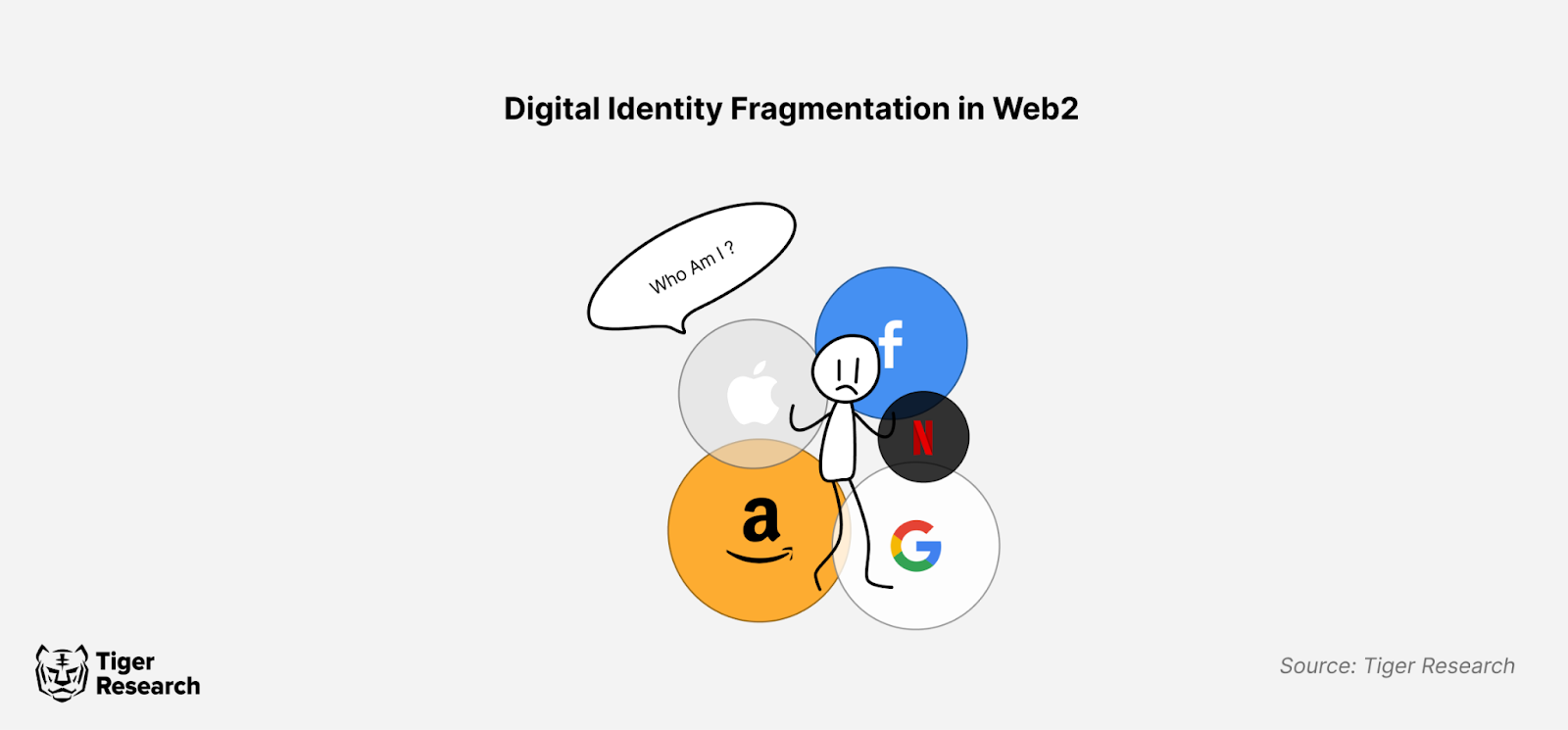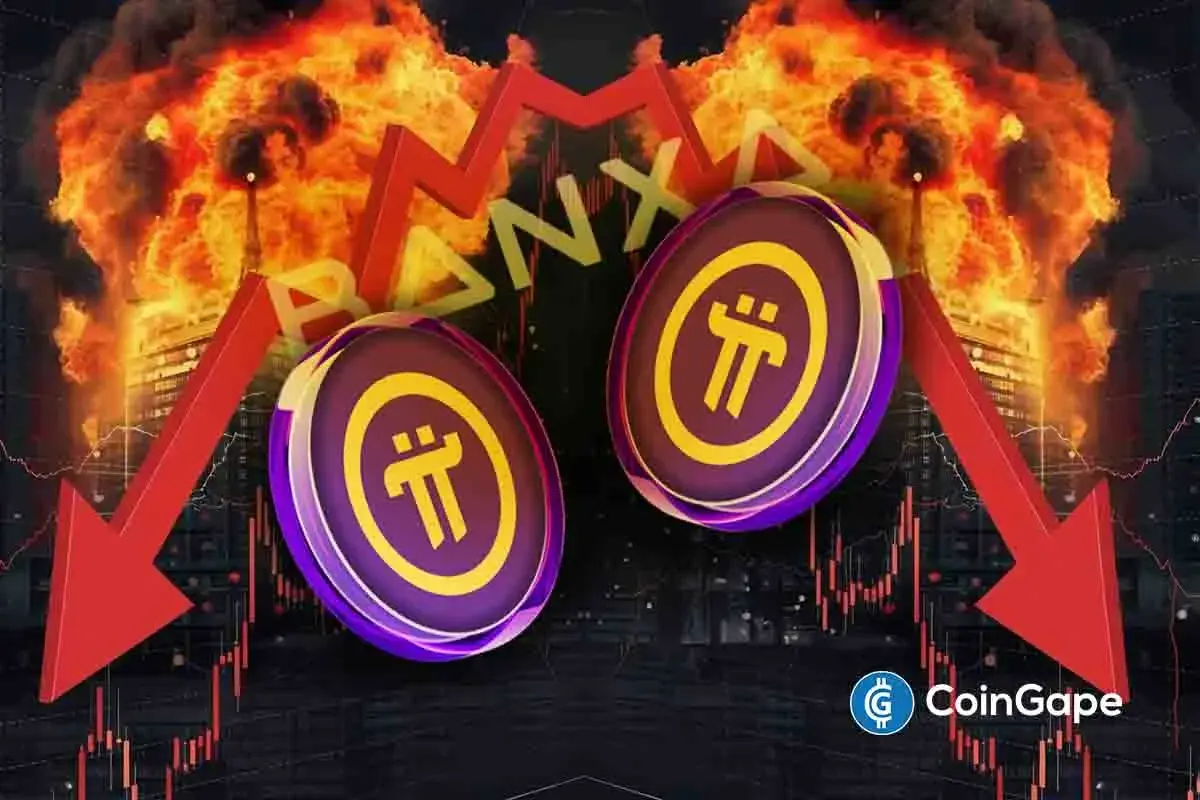Market
Moca Network on Fixing Fragmented Digital Identity in Web3

The current state of digital identity management in Web3 presents challenges due to its fragmented nature. This fragmentation leads to operational inefficiencies and limits the potential for individual users and businesses. To address these issues, developers are working towards developing an open and user-focused infrastructure.
At Consensus Hong Kong, BeInCrypto spoke with Moca Network’s project lead Kenneth Shek, about scaling a digital identity-based ecosystem to create a unified environment that empowers users to manage their data.
The Fragmentation Challenge
In Web2 and Web3, user digital identities are scattered across various platforms, leading to inefficiencies and lost opportunities for users and businesses. While businesses struggle to identify and target valuable users accurately, users are not fully recognized for their accumulated value across different platforms.
“Using a Web2 sense, you have a Marriott account, a British Airways account, you have all these accounts. Even if you’re using the same email login, you are treated as a different user and you need to have a password manager remembering 100 logins, and there’s nothing that you can reuse from one app to another app,” Shek explained.

Similarly, when it comes to advertising in Web2, companies use platforms like Meta to categorize users and deliver tailored advertisements, according to a report by South Korean Web3 firm Tiger Research. However, this process is constrained by the limited user data available within each platform.
Consequently, the precision and effectiveness of these targeted ads diminish. Users, who typically engage with numerous online services, experience fragmented digital profiles, resulting in advertisements confined to the context of single platforms.
Web3 projects experience similar issues in the deployment of airdrops.
Web3’s Identity Verification Problem
Web3 projects often employ airdrops to distribute rewards to active ecosystem participants. However, implementing these airdrops is complicated by the dispersion of user activities across both Web2 and Web3 platforms.
“There’s no one single layer that connects everything,” Shek told BeInCrypto.
The reliance on data derived from a single blockchain can hinder the accurate identification of legitimate contributors. Furthermore, the inherent anonymity and decentralized structure of Web3 enable users to enter and exit networks with relative ease.
A notable illustration of these difficulties is the Starknet airdrop, which targeted approximately 1.3 million wallet addresses. The airdrop encountered difficulties distinguishing authentic contributors due to limitations in available data. This resulted in a significant decline in network activity.
Platform-Centric Control Issues
Tiger Research attributes digital identity fragmentation to several factors. These include platform-centric control, technical incompatibilities between platforms, and data restrictions imposed by large technology companies like Alibaba, Tencent, and the FAANG group.
This systemic issue also generates practical inconveniences and introduces imbalances in value distribution. Users must establish distinct accounts on each platform and repeatedly reconstruct their activity and profile data.
Platforms leverage this situation to accumulate and retain the value of user data. Companies like Google and Meta generate substantial annual revenue through advertising models that depend on user data. Additionally, platforms such as Reddit generate significant quarterly revenue by commercializing user data.
Conversely, the users, as the originators of this data, are typically excluded from direct participation in the resulting economic benefits.
“The ownership should be going back to the user. There’s already many court cases where companies, including banks or Google, are suing the users for taking their data and monetizing on their own, and every time the case and the conclusion is that the user has a right to own their own data and monetize it,” said Shek.
Moca Network, Animoca Brands’ flagship project, is developing a digital identity ecosystem. This project aims to unify user data and empower users to manage their own information.
The Case for an Open Internet
Though Moca Network is generally defined as an NFT-focused project, its dedication to creating an open internet infrastructure has been in full force for a long time.
“Since three years ago, we have been talking about how to grow the network effect and the value by pulling everything together. Imagine the entire Animoca portfolio, all the partners we work with, the enterprises with large user bases are going to adopt this. Everything will flow to one another and with crypto as the incentive layer, it’s going to be thriving beyond the big tech companies,” Shek told BeInCrypto.
The network’s Moca 3.0 project proposes a system where a single, unified account manages a user’s digital assets, identity information, and reputation across various online platforms.
The design prioritizes a user-centered approach. Systems are built to accommodate individual users rather than forcing them to adapt to existing limitations. Moca 3.0’s AIR Kit would serve as the network’s universal account system.
“The AIR Kit stands for Account, Identity, and Reputation, and it’s the SDK that our partners would be integrating, building that network together,” Shek explained.
AIR Kit integrates accounts and identities, using an ID as the user-service interface. The system simplifies Web3 wallet creation and on-chain activity by abstracting blockchain complexities. It also enhances user experience through features such as gas coverage and cross-chain transactions.
Meanwhile, Moca has also integrated a structure that ensures users control their data.
Empowering Users with Data Ownership
The Moca Network’s credential system, complementing its unified account system, facilitates user data management and value creation. Users gain data control via secure, decentralized storage and manage access for credential handling, addressing centralized platform limits.
“What we want to bring is ownership and interoperability of user digital identity and their own data that they can tokenize and they can bring it anywhere so as to make the whole internet programmable. Right now it’s not programmable because every time you go to a new game or you go to a new app, you’re being treated as a new user every time. But what if you do something in one app and then there’s a history about you and then you go to another app, that app is creating a programmable user experience based on your user identity,” Shek said.
Meanwhile, data protection within the system employs tamper-proof technology and zero-knowledge proofs. Cross-chain messaging protocols enable users to transfer credentials between systems, facilitating secure interaction with smart contracts across various blockchains.
Future development plans include integrating technology that verifies and utilizes Web2 data on-chain. The integration of Web2 and Web3 data aims to create a more comprehensive digital identity system designed to bridge the gap between these environments and foster a user-centric ecosystem.
“2025 is definitely going to be very exciting. We’re building an infrastructure that we haven’t seen in the space right now. We are focused on the things that matter and that would actually make an impact on adoption,” Shek concluded.
Disclaimer
In compliance with the Trust Project guidelines, this opinion article presents the author’s perspective and may not necessarily reflect the views of BeInCrypto. BeInCrypto remains committed to transparent reporting and upholding the highest standards of journalism. Readers are advised to verify information independently and consult with a professional before making decisions based on this content. Please note that our Terms and Conditions, Privacy Policy, and Disclaimers have been updated.
Market
Solana (SOL) Price Rises 13% But Fails to Break $136 Resistance

Solana (SOL) has climbed 13% over the past seven days, showcasing strong short-term performance. While momentum indicators like the RSI and EMA lines remain supportive, recent price action suggests that bullish strength may be stalling just below a key breakout point.
At the same time, the sharp drop in BBTrend indicates weakening trend strength and fading volatility, often a sign of incoming consolidation or market indecision. With technicals at a crossroads, SOL’s next move will likely depend on whether buyers can regain control or if a broader pullback begins to unfold.
SOL RSI Rises Sharply, but Pause in Momentum Signals Caution
Solana’s Relative Strength Index (RSI) is currently at 60.35, marking a noticeable rise from 45 just two days ago.
This jump signals growing bullish momentum, although the RSI has remained stable since yesterday, suggesting that upward pressure may be easing for now.
The increase reflects renewed buying interest in recent sessions, pushing SOL closer to overbought territory but not quite there yet. This leveling off could indicate that the market is taking a breather before deciding its next move.

The RSI is a momentum oscillator that measures the speed and magnitude of price movements, ranging from 0 to 100. Values above 70 typically indicate that an asset is overbought and may be due for a pullback, while readings below 30 suggest oversold conditions, potentially signaling a buying opportunity.
With Solana’s RSI at 60.35, the asset is approaching bullish territory but hasn’t yet entered an extreme zone.
This positioning suggests that while recent momentum is positive, SOL could face some short-term consolidation or resistance before continuing higher—unless strong buying interest resumes and pushes the RSI closer to overbought levels.
SOL Trend Strength Weakens as BBTrend Falls Below 6
Solana’s BBTrend indicator is currently at 5.69, a significant drop from the 17.5 reading observed just four days ago.
This sharp decline suggests that volatility around SOL’s price has cooled notably, and the strength of the prior trend is weakening.
While BBTrend doesn’t signal direction on its own, the drop indicates that the strong movement, likely bullish, has lost momentum, and SOL may be entering a phase of consolidation or uncertainty.

BBTrend, short for Bollinger Band Trend, measures the strength of a price trend based on the expansion or contraction of Bollinger Bands.
Higher values suggest a strong, directional move (either up or down), while lower values point to weaker trends and reduced volatility. With BBTrend now at 5.69, Solana is in a much less volatile environment, which often precedes a breakout or a reversal.
For now, this reading signals that the recent momentum is fading. Unless volatility picks up again, SOL’s price may remain range-bound in the short term.
Golden Cross Looms for SOL, But $136 Barrier Still Holding Strong
Solana’s EMA lines continue to reflect a bullish structure, with the short-term average trending above the long-term one—suggesting that positive momentum remains intact.
A potential golden cross is also forming, which, if confirmed, would further reinforce the bullish outlook.
However, despite this favorable setup, Solana price has struggled to break through the $136 resistance level over the past few days, indicating that buyers may be losing steam at this key threshold.
Tracy Jin, COO of MEXC told BeInCrypto:
“Amid widespread volatility, Solana has stood out with notable strength. A combination of favorable technical setups and institutional tailwinds — such as the launch of the first spot Solana ETFs in North America — has helped drive a short-term rally. The token’s reclaim of leadership in decentralized exchange activity and rising total value locked further support the bullish case.”

If SOL manages to push above $136 with strong volume, it could open the path toward the next targets at $147 and potentially higher. But if the current momentum fades and the price reverses, a test of support at $124 becomes likely.
About Solana next moves, Jin told BeInCrypto:
“Despite recent gains, SOL’s near-term outlook remains sensitive to broader liquidity conditions. Any deterioration in market confidence — whether from macro shocks or renewed volatility in Bitcoin — could cap upside potential.”
A breakdown below that could accelerate losses toward $112, and in the event of a deeper correction, SOL could even revisit the $95 region.
Disclaimer
In line with the Trust Project guidelines, this price analysis article is for informational purposes only and should not be considered financial or investment advice. BeInCrypto is committed to accurate, unbiased reporting, but market conditions are subject to change without notice. Always conduct your own research and consult with a professional before making any financial decisions. Please note that our Terms and Conditions, Privacy Policy, and Disclaimers have been updated.
Market
Pi Network Roadmap Frustrates Users Over Missing Timeline

Pi Network released its Mainnet Migration Roadmap today. The roadmap lays out a three‑phase plan to move tens of millions of Pioneers who are still waiting to be moved to the open network. It also introduces new rewards, such as referral bonuses.
However, unlike most project roadmaps, Pi network didn’t provide any estimated date or timeline. This lack of clarification has frustrated early adopters who still await key rewards and clarity on rollout pacing.
Pi Network’s Three‑Phase Migration Plan
According to the roadmap, Pi Network will first complete initial migrations for Pioneers already in the queue. This batch covers verified base mining rewards, Security Circle contributions, lockup commitments, utility‑app usage rewards, and confirmed Node rewards for some operators.
After clearing the first wave, the team will tackle second migrations, adding all referral mining bonuses linked to KYC‑verified team members. Pi says these referral rewards will follow once the current queue finishes.
Finally, the network will move into ongoing periodic migrations—potentially monthly or quarterly—to process any remaining bonuses and rewards.
The cadence “is to be determined,” the roadmap notes.
Community Concerns and Critical Gaps
A thorough observation reveals several gaps and potential concerns in the roadmap.
For one, the plan never discloses how many Pioneers remain in the queue or the network’s daily migration capacity. Without those figures, users can’t predict when their own migration will occur.
Node operators report that some “confirmed Node rewards” have landed, but criteria for qualification remain opaque. Early node runners worry they may miss out without clear benchmarks.
Many Pioneers say they have tapped their claim buttons daily since migration opened yet still lack basic mining rewards. They question whether those base rewards and deferred referral bonuses will ever arrive in phase two.
Also, the roadmap admits the UI’s “Transferable Balance” underestimates actual migrated amounts to save resources. Users fear this pessimistic display could erode trust if their true balances remain hidden.
“I thought we were mining all of these PI coins this whole time? I thought the security circles were the Consensus Mechanism. It kinda seems to me like there isn’t a blockchain, and never was one. What kind of “Blockchain protocol” would “Require” all tokens to be minted at genesis?” one community member wrote.
Crucially, Pi offers no audit or error‑resolution process for users who spot mismatches in their historical mining data.
Given six years of complex records, occasional disputes seem inevitable, but the roadmap remains silent on redress.
All migrations hinge on KYC completion, yet the team omits any scaling targets or timelines for identity verification. A bottleneck here could stall every subsequent phase.
The schedule also ignores how major token unlock events—such as the roughly 108.9 million PI tokens due to release this month—will align with migration waves.

Finally, some Pioneers challenge the project’s foundational narrative. They note that Pi’s statement “all tokens were minted at genesis” contradicts six years of “mining.”
This raises doubts about whether Pi ever operated on a true blockchain protocol.
In the past month, PI price has dipped by over 45%. To sustain momentum and community trust, the team must now supply concrete timelines, transparent criteria, and clear audit paths for its Mainnet migration.
Disclaimer
In adherence to the Trust Project guidelines, BeInCrypto is committed to unbiased, transparent reporting. This news article aims to provide accurate, timely information. However, readers are advised to verify facts independently and consult with a professional before making any decisions based on this content. Please note that our Terms and Conditions, Privacy Policy, and Disclaimers have been updated.
Market
MEME Rallies 73%, BONE Follows

The meme coin market is experiencing a surge in investor interest, helping certain tokens recover from their all-time lows (ATLs). Memecoin (MEME) is one such token that has avoided a new ATL and also posted a significant 73% rise.
BeInCrypto has analyzed two other meme coins that have performed well over the past day, making them important tokens to watch.
Memecoin (MEME)
- Launch Date – November 2023
- Total Circulating Supply – 43.11 Billion MEME
- Maximum Supply – 69 Billion MEME
- Fully Diluted Valuation (FDV) – $135.37 Million
MEME had a rough week, hitting a new all-time low at $0.00137. However, the altcoin rebounded sharply, rising by 38% in the last 24 hours to trade at $0.00196. This surge marks a significant recovery, driven by renewed interest in meme coins.
The recent surge in MEME’s price was fueled by a sudden spike in interest for joke tokens, driving a 73% intraday high. To maintain its gains, MEME must successfully breach and flip the $0.00228 resistance into support, a critical level for sustaining its upward momentum.

If MEME experiences profit-taking from investors, it could reverse course and drop back down to the all-time low of $0.00137. A decline through this level would invalidate the bullish outlook and signal further challenges for the meme coin.
Bone ShibaSwap (BONE)
- Launch Date – July 2021
- Total Circulating Supply – 249.89 Million BONE
- Maximum Supply – 250 Million BONE
- Fully Diluted Valuation (FDV) – $71.67 Million
BONE posted an impressive 18.5% rise over the last 24 hours, trading at $0.285. The altcoin is currently under the key resistance of $0.295. Given the recent momentum, it seems poised to breach this level, signaling a potential upward trajectory for the token in the near future.
Flipping the $0.295 resistance into support would open the door for BONE to target its next major resistance at $0.348. A sustained push above this level could drive further bullish sentiment, propelling the token toward even higher price levels.

However, if BONE fails to breach $0.295, the bullish momentum could fade. A decline from this point could send the meme coin back towards $0.232, invalidating the optimistic outlook. Such a reversal would likely create caution among investors, delaying potential upward movement.
- Launch Date – April 2024
- Total Circulating Supply – 999.96 Million BAN
- Maximum Supply – 1 Billion BAN
- Fully Diluted Valuation (FDV) – $40.54 Million
BAN, a small-cap token, has caught the attention of investors, rising nearly 25% in the last 24 hours to trade at $0.040. This surge highlights the growing interest in the meme coin market, with BAN standing out despite its smaller market capitalization.
Inspired by the infamous banana taped to a wall, BAN gained significant fame after being purchased by Tron’s founder, Justin Sun, for $6.2 million last year. If the token continues its upward momentum, it could breach the $0.045 barrier and potentially flip it into support, securing its gains.

However, failing to break through the $0.045 resistance could lead to a drop back to $0.032. If this occurs, it would invalidate the bullish outlook and erase the recent gains, putting investors on alert for further price declines.
Disclaimer
In line with the Trust Project guidelines, this price analysis article is for informational purposes only and should not be considered financial or investment advice. BeInCrypto is committed to accurate, unbiased reporting, but market conditions are subject to change without notice. Always conduct your own research and consult with a professional before making any financial decisions. Please note that our Terms and Conditions, Privacy Policy, and Disclaimers have been updated.
-

 Ethereum24 hours ago
Ethereum24 hours agoEthereum Investors Suffer More Losses Than Bitcoin Amid Ongoing Market Turmoil
-

 Ethereum17 hours ago
Ethereum17 hours agoEthereum Fee Plunges To 5-Year Low—Is This A Bottom Signal?
-

 Market20 hours ago
Market20 hours agoEthereum Price Fights for Momentum—Traders Watch Key Resistance
-

 Altcoin20 hours ago
Altcoin20 hours agoExpert Predicts Pi Network Price Volatility After Shady Activity On Banxa
-

 Altcoin23 hours ago
Altcoin23 hours agoTron Founder Justin Sun Reveals Plan To HODL Ethereum Despite Price Drop
-

 Market18 hours ago
Market18 hours agoIs XRP’s Low Price Part of Ripple’s Long-Term Growth Strategy?
-

 Bitcoin17 hours ago
Bitcoin17 hours agoWhat Good Friday Options Expiry Means for Bitcoin & Ethereum
-

 Market22 hours ago
Market22 hours agoSui Meme Coins Surge With Rising DEX Volumes





















